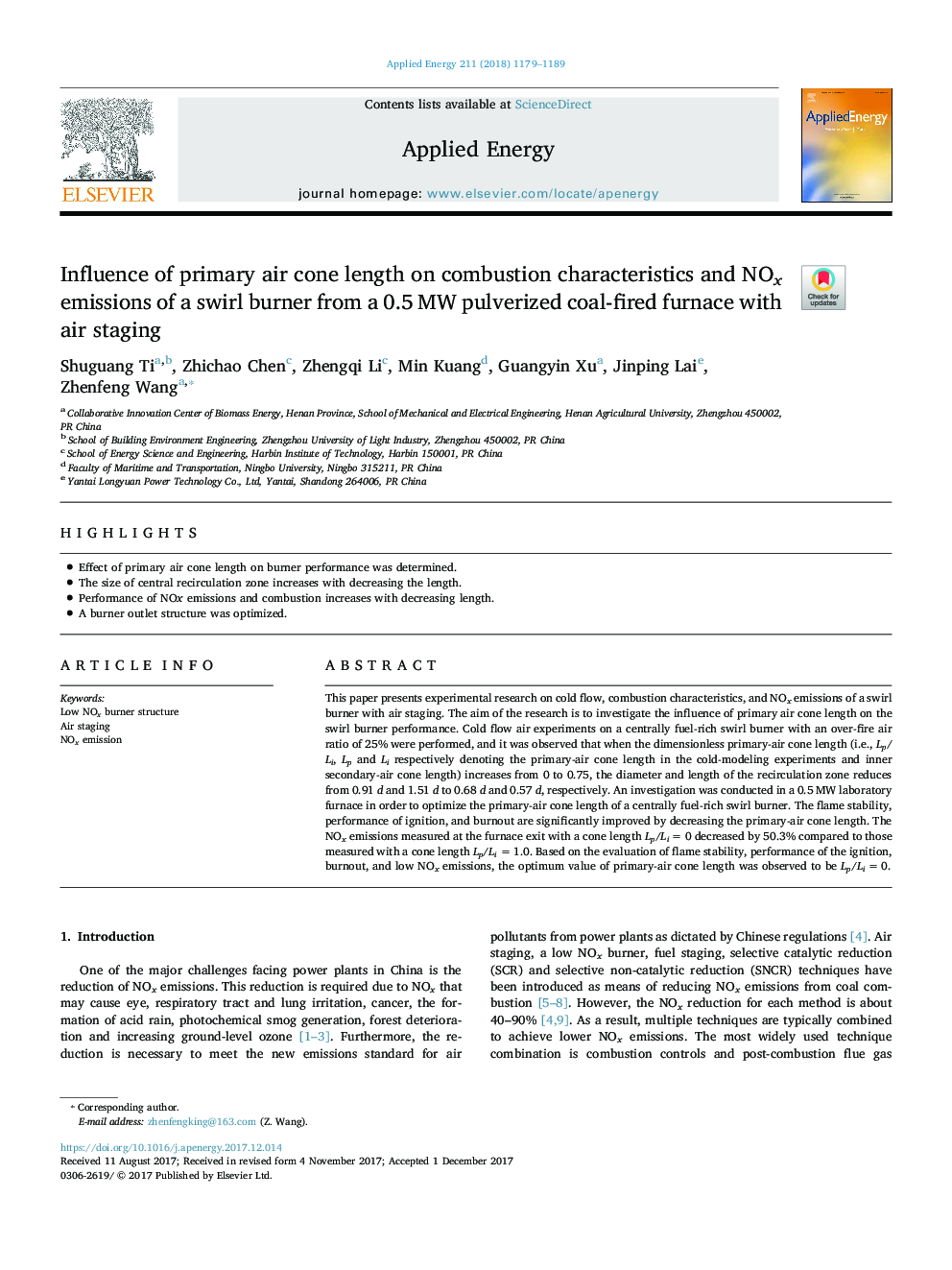| Article ID | Journal | Published Year | Pages | File Type |
|---|---|---|---|---|
| 6681499 | Applied Energy | 2018 | 11 Pages |
Abstract
This paper presents experimental research on cold flow, combustion characteristics, and NOx emissions of a swirl burner with air staging. The aim of the research is to investigate the influence of primary air cone length on the swirl burner performance. Cold flow air experiments on a centrally fuel-rich swirl burner with an over-fire air ratio of 25% were performed, and it was observed that when the dimensionless primary-air cone length (i.e., Lp/Li, Lp and Li respectively denoting the primary-air cone length in the cold-modeling experiments and inner secondary-air cone length) increases from 0 to 0.75, the diameter and length of the recirculation zone reduces from 0.91 d and 1.51 d to 0.68 d and 0.57 d, respectively. An investigation was conducted in a 0.5â¯MW laboratory furnace in order to optimize the primary-air cone length of a centrally fuel-rich swirl burner. The flame stability, performance of ignition, and burnout are significantly improved by decreasing the primary-air cone length. The NOx emissions measured at the furnace exit with a cone length Lp/Liâ¯=â¯0 decreased by 50.3% compared to those measured with a cone length Lp/Li =â¯1.0. Based on the evaluation of flame stability, performance of the ignition, burnout, and low NOx emissions, the optimum value of primary-air cone length was observed to be Lp/Liâ¯=â¯0.
Keywords
Related Topics
Physical Sciences and Engineering
Energy
Energy Engineering and Power Technology
Authors
Shuguang Ti, Zhichao Chen, Zhengqi Li, Min Kuang, Guangyin Xu, Jinping Lai, Zhenfeng Wang,
